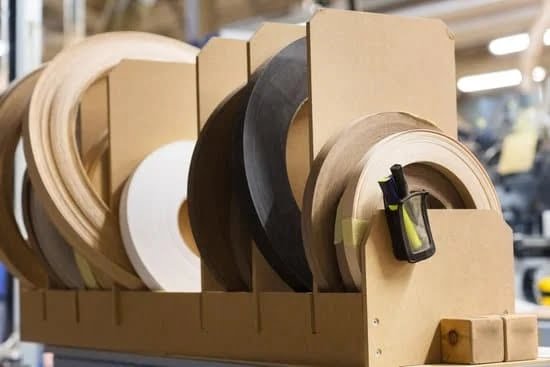Are you a traveling woodworker wondering how to carry woodworking tools on airline flights? Whether you’re a professional or hobbyist, having the right tools is crucial for woodworking on the go. In this article, we’ll explore the regulations, packing tips, and essential tools needed to ensure safe and secure transportation of your woodworking tools when traveling by air.
For many woodworkers, their tools are essential for their livelihood or passion, and being able to transport them safely is crucial. However, navigating TSA regulations and airline restrictions can be challenging. Understanding the rules and knowing how to pack your woodworking tools properly can make a significant difference in ensuring they arrive at your destination unscathed.
We’ll also discuss the pros and cons of carrying woodworking tools in different luggage options – from carry-on bags to checked luggage. Additionally, we will provide a list of must-have woodworking tools for traveling woodworkers and explore alternative options and techniques for woodworking on the go. Finally, we will share real-life experiences of traveling woodworkers and expert advice from professional woodworkers on navigating airline travel with woodworking tools.
TSA Regulations
When it comes to carrying woodworking tools on airline flights, understanding TSA regulations is crucial for a smooth and hassle-free travel experience. The Transportation Security Administration (TSA) has specific rules and restrictions in place to ensure the safety and security of all passengers. By familiarizing yourself with these regulations, you can avoid any potential issues or delays when traveling with your woodworking tools.
To help you navigate TSA regulations for carrying woodworking tools, here are some key points to keep in mind:
- Know the Prohibited Items: The TSA has a list of prohibited items that are not allowed in carry-on or checked luggage. It’s important to review this list to ensure that your woodworking tools comply with the regulations.
- Pack Smart: When packing your woodworking tools, make sure they are well-organized and easily accessible for TSA inspection. Avoiding bulky or oversized toolboxes can help streamline the security process.
- Check Size and Quantity Limits: Some tools may have size or quantity limits imposed by the TSA. Be aware of these limitations and plan accordingly when packing your woodworking tools for air travel.
By understanding the rules and restrictions set forth by the TSA, you can proactively prepare for a smooth airport security screening process when carrying woodworking tools on airline flights.
Checking official resources such as the TSA website or contacting their customer service can provide up-to-date information on what is allowed and not allowed on board flights. By staying informed, travelers can ensure their peace of mind while bringing their essential woodworking tools on their journey.
Packing Tips
When it comes to traveling with woodworking tools on airline flights, it’s essential to pack them in a way that ensures safe and secure transportation. The first step is to familiarize yourself with the TSA regulations regarding the carriage of tools in your carry-on or checked luggage. It’s important to know which tools are allowed and which ones are restricted, as well as any specific packing requirements.
One important tip for packing woodworking tools is to use a sturdy and durable toolbox or case to protect them during transit. Make sure that the case is appropriately sized to fit your tools snugly and securely. Additionally, consider using foam inserts or padding within the case to prevent the tools from shifting or bumping into each other during travel.
Another crucial consideration when packing woodworking tools for airline flights is to ensure that sharp or pointed items are properly sheathed or capped. This not only protects the tools themselves but also prevents accidental injuries while handling your luggage. Lastly, be sure to double-check your packed woodworking tools before heading to the airport, as it’s easy to overlook small items like screws, nails, or blades that may be considered prohibited items by airport security.
In summary, taking the time to pack your woodworking tools thoughtfully and carefully can make all the difference in ensuring they arrive safely at your destination. By following TSA regulations and utilizing proper packing techniques, you can travel with your essential woodworking tools without any hassle or inconvenience.
| Packing Tip | Description |
|---|---|
| Use a sturdy toolbox | Select a durable carrying case for protection |
| Padding and sheathing | Prevent movement and protect against injuries with foam inserts and sheaths |
Carry-on vs Checked Luggage
Carrying woodworking tools while traveling by airline can be a tricky task, especially when it comes to deciding whether to bring them as carry-on or checked luggage. Each option has its own set of pros and cons depending on the type of tools being transported and the specific needs of the traveler.
When it comes to carry-on luggage, the main advantage is that you have your tools with you at all times, reducing the risk of loss or damage during transit. Additionally, having your woodworking tools as carry-on items allows you to start working on your projects immediately upon reaching your destination. However, there are strict TSA regulations regarding the types of tools allowed in carry-on luggage, which means that certain sharp or large tools may not be permitted.
On the other hand, checked luggage provides more leeway in terms of the types and sizes of woodworking tools that can be packed. This option is ideal for larger, bulkier items that may not fit in carry-on bags. Nevertheless, there is always a risk of mishandling by airport staff and potential loss or damage during transit when using checked luggage.
To help travelers make an informed decision on how to transport their woodworking tools via airline flights, it’s important to consider the specific needs and circumstances surrounding each trip. Understanding TSA regulations and carefully packing woodworking tools are crucial factors in ensuring a smooth travel experience for woodworkers.
| Carry-on Luggage | Checked Luggage |
|---|---|
| Main advantage is having tools at all times | Provides more leeway for larger items |
| Strict TSA regulations regarding allowed items | Risk of mishandling by airport staff |
| Reduces risk of loss or damage during transit | Potential loss or damage during transit |
Essential Woodworking Tools
Woodworking requires a specific set of tools to ensure quality and precision in crafting wood. For traveling woodworkers, it is essential to have a selection of must-have woodworking tools that are not only portable but also compliant with airline regulations. Here, we’ll explore the essential woodworking tools that every traveling woodworker should consider including in their toolkit for airline travel.
Hand Planes
Hand planes are indispensable for shaping and smoothing wood surfaces. These versatile tools come in various sizes and are crucial for achieving a professional finish on woodworking projects. When choosing hand planes for airline travel, opting for compact and lightweight models is key to ensuring hassle-free transportation.
Chisels
Chisels are essential for carving out intricate details and joints in woodworking projects. Traveling woodworkers should select a set of quality chisels that come with blade guards or protective casings to prevent damage during transit. Additionally, be sure to adhere to TSA guidelines regarding the transport of sharp objects such as chisels in carry-on or checked luggage.
Folding Saw
A portable folding saw is a convenient tool for cutting through wood when working on-the-go. Look for a folding saw with a secure locking mechanism and a blade guard for safe packing and transportation. Ensure that the saw meets the size requirements imposed by airlines for carrying onboard or in checked luggage.
By carefully selecting and packing these essential woodworking tools, traveling woodworkers can continue pursuing their craft while adhering to airline regulations. Understanding the rules and restrictions, as well as implementing smart packing techniques, will help ensure that woodworking tools arrive at their destination safely and securely.
Alternative Options
Traveling with woodworking tools can be a challenge, especially when it comes to airline travel. However, there are alternative options for woodworking on the go that can make this process easier. One alternative is to use compact and portable hand tools instead of traditional power tools.
Hand tools such as chisels, hand saws, and hand planes can be more easily transported in carry-on luggage or checked baggage. Not only are these tools easier to bring on flights, but they also provide woodworkers with the flexibility to work in various locations without needing access to electricity.
Another alternative option for woodworking on the go is to invest in multifunctional tools. There are several woodworking tools available that have multiple functions, which can help minimize the number of items that need to be transported. For example, there are combination square rulers that can measure and mark wood, as well as serve as a level or a depth gauge.
Additionally, there are multi-bit screwdrivers that have interchangeable bits for various screw types. By using these multifunctional tools, traveling woodworkers can reduce the overall amount of gear they need to bring with them.
Finally, exploring alternative techniques for woodworking on the go can also be beneficial when flying with woodworking tools. For example, instead of using traditional clamps for holding pieces of wood together during glue-ups or assemblies, traveling woodworkers could consider using portable strap clamps that are lighter and more compact. Additionally, learning hand-tool joinery techniques as an alternative to machine-based joinery methods can also make woodworking on the go more feasible when flying with woodworking tools.
Overall, by considering alternative options such as compact hand tools, multifunctional tools, and alternative techniques for woodworking on the go, traveling woodworkers can find ways to continue pursuing their craft while adhering to airline regulations and ensuring safe transportation of their tools.
Case Studies
Carrying Woodworking Tools in Carry-on Luggage
For many traveling woodworkers, carrying their woodworking tools in carry-on luggage is the preferred option. This ensures that the tools are with them at all times and reduces the risk of damage or loss.
However, it’s important to remember that TSA regulations restrict the type and size of tools that can be brought in carry-on luggage. Sharp objects such as chisels and saws may not be allowed, so it’s essential to check the current regulations before packing.
Choosing the Right Tool Bag or Case
One key aspect of successfully transporting woodworking tools on airline flights is choosing the right tool bag or case. A durable and sturdy case will provide protection for your tools and prevent damage during handling. Look for a case with padded compartments to keep your tools secure and organized. Additionally, consider investing in a lockable case to comply with TSA requirements and ensure that your tools are secure while in transit.
Communicating With Airline Staff
Some traveling woodworkers have found success in communicating with airline staff when carrying their woodworking tools on flights. It’s recommended to inform the airline in advance about the presence of sharp or potentially hazardous items in your luggage. This proactive approach can help avoid any misunderstandings at security checkpoints and streamline the process of transporting woodworking tools on airline flights.
By following these tips from experienced traveling woodworkers, individuals can ensure that they transport their woodworking tools safely and responsibly when flying. Understanding TSA regulations, choosing suitable tool storage options, and proactively communicating with airline staff can all contribute to a smooth travel experience for woodworking enthusiasts.
Expert Advice
When it comes to traveling with woodworking tools on airline flights, it’s essential to be aware of the rules and regulations set by the Transportation Security Administration (TSA). Professional woodworkers who frequently travel for their craft have developed various tips and tricks to navigate these regulations and ensure that their tools are transported safely and securely. Here are some expert pieces of advice from seasoned woodworkers:
- Check TSA Regulations: Before heading to the airport, always make sure to review the latest TSA regulations regarding carrying tools in both carry-on and checked luggage. Understand which tools are allowed in each type of luggage and any specific packing requirements.
- Use Secure Tool Cases: Invest in durable and secure tool cases or boxes to pack your woodworking tools. Ensure that these cases are sturdy enough to withstand the rigors of air travel and can provide adequate protection for your tools.
- Organize Your Tools: It’s important to organize your tools efficiently within your tool case. Use foam inserts or custom-made dividers to keep your tools in place and prevent them from shifting during transit, which could cause damage.
Professional woodworkers emphasize the importance of thorough preparation and planning when carrying woodworking tools on airline flights. By following these expert tips, traveling woodworkers can ensure a smooth experience while keeping their essential woodworking tools safe and secure throughout their journey.
Conclusion
In conclusion, the safe and responsible transportation of woodworking tools on airline flights is essential for traveling woodworkers. Understanding the TSA regulations, packing tips, and the pros and cons of carrying woodworking tools in different luggage options are crucial for a smooth travel experience. It is important to prioritize safety and security when packing woodworking tools, whether in checked luggage or carry-on bags.
As highlighted in this article, knowing the essential woodworking tools for traveling woodworkers and exploring alternative options can also be beneficial for those who need to work while on the go. Real-life case studies have provided valuable insights into how traveling woodworkers navigate the challenges of carrying their tools, shedding light on various techniques and strategies that could be useful to others in similar situations.
Lastly, seeking expert advice from professional woodworkers is highly recommended for those looking for additional tips and tricks on how to carry woodworking tools on airline flights. By following these guidelines and prioritizing safety and responsibility, traveling woodworkers can continue pursuing their craft while ensuring compliance with airline regulations.
Frequently Asked Questions
Can You Take Tools in Hand Luggage?
Generally, tools such as screwdrivers, wrenches, and pliers are allowed in hand luggage on a plane. However, sharp or pointed tools like knives or scissors may be prohibited. It’s best to check with the airline and TSA guidelines to ensure that the specific tools you plan to bring are allowed in your hand luggage.
Can You Fly With Chisels?
Chisels can be a bit tricky when it comes to flying with them. They may be allowed in checked baggage, but it’s less clear whether they are permitted in hand luggage.
The decision may ultimately depend on the discretion of airport security and airline staff, so it’s advisable to contact both before attempting to bring chisels on a plane.
Can You Take Tool Batteries on a Plane?
Tool batteries are generally allowed in either checked or hand luggage if they meet certain criteria. For example, spare lithium-ion batteries for power tools should ideally have their terminals covered or be packaged in a way that prevents short circuits. It’s important to review airline and TSA regulations regarding battery transportation before packing tool batteries for a flight.

Hi everyone! I’m a woodworker and blogger, and this is my woodworking blog. In my blog, I share tips and tricks for woodworkers of all skill levels, as well as project ideas that you can try yourself.





